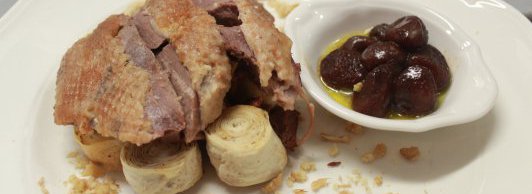
İbrahim Canbulat, M. Architect
The 3rd leg of the Traditional Foods Festival promoted by the UNESCO Turkey National Commission was held in Safranbolu in 2008 and I served as a member of the steering committee during the preparation works that started in November 2007 and lasted until March of 2008. I was the moderator of the first three of a series of “Keşkek Festivals” (a dish of lamb or chicken and coarsely ground wheat) (the Bulak Keşkek Festival, Yenice Aşı and Eflâni Bandırma Festival) organized with the aim of scanning the culinary culture of Karabük that has recently become a province and support the activities of the NGOs. I conducted numerous oral history interviews to determine the contents and form of the cuisine presentation of Karabük1, the host of the festival. Karabük Sofrası dinner we designed at the end of this approximately 7-month long research work was offered to our guests2. I also worked on determining the 5 Paphlagonian cities, participants of the Festival, and their menus. In addition to Karabük, the cities in question were Bartın, Kastamonu3,Çankırı4 and Bolu. Both the menu preparation and the presentation process made it clear that the region had a specific cuisine. I gained important information regarding the culinary culture of the region as a result of field surveys, trips and literature search that followed and for some time now I have been preparing and offering our guests Paphlagonian dishes.
Finding written sources regarding the local history becomes a major problem as one gets further away from the capital. This shortage is experienced in all research regarding local history regardless of the discipline involved. The same problem is true for research regarding culinary culture. In this study, culinary culture itself has been regarded as a document and some inferences regarding the life of the different social strata and uses of space in the past have been made. Therefore, being speculative from time to time was inevitable. With your contributions we may be able to confirm or negate some of the arguments I will put forth, and attain more accurate results. Therefore, please accept my methodology with tolerance.
I must point out that although essentially local culinary culture has a very strong backbone, it has a very dynamic structure that is open to change and influence. Culinary culture that is an inseparable part of social life contains important divergences between different ethnic communities and strata. Local food by its very nature makes use of local products. And again by its very nature local products are the result of the geographical properties of region. However, looking into the time dimension shows that culinary culture reflects the history of the community but at the same time it contains very important indicators that have undergone a very slow change over time. We must also add to this the spirit of the relevant period. The saying “Tell me what you eat, I will tell you who you are”5 is a very good example for this. Therefore, we must dwell shortly on the geographical and historical characteristics of Paphlagonia.
Paphlagonia
To a large extent, Paphlagonia coincided with the West Black Sea Region that is a sub-division of what is now the Black Sea Region. The Filyos River6 separated Paphlagonia from Bithynia at its west and the Kızılırmak (Halys) River from Pontus at its east. According to present day administrative division - listed clockwise- Paphlagonia contained the provinces of Zonguldak (east), Bartın, Kastamonu, Sinop, Çorum (west), Çankırı, Karabük and Bolu. The most important features of the region are the mountain ranges (lower compared to those of the East Black Sea Region) running parallel to the shore and the valleys and high plateaus among these mountains. To some extent, these mountain ranges protect the area both from the cold north winds and the continental climate of Central Anatolia. The high plateaus offer serious advantages for agriculture and animal husbandry. Again for the same reason, the region contains the most important forests of Anatolia.
----------
1 The people interviewed: Bedriye Kavsa, Hatice Büyükkaragöz, Hikmet German Şeyhoğlu, Nezihe Aycan Kadıoğlu, Gülten Bayramgil, Zahide Deniz, Şenol Adalar and İlhan Kavuşturucu. I owe thanks to them and to Aytekin Kuş who gave me their names. Kadriye Cebeci was my assistant during these interviews
2 At the Karabük Dinner we served two starters, main dish, desert and kiren (wild carnelian cherry) and rosehip syrup. Although there are no side dishes in traditional food, we presented the meat that was the main dish on a bed of galium with an experimental approach so that traditional dishes can be commercialized. I owe thanks to Gürsel Keleş, Secretary General of the Eurasian Chefs Association, who gave us much support in the preparation and presentation of the menu.
3 Menu: Ovmaç Çorbası, Banduma, Eğşili Pilav, Etli Ekmek, Köle Hamuru
4 Menu: Deli Bakla Çorbası, Çeşni Cevizli Erişte, Bolu Köftesi ve Bolu Beyi Tatlısı
5 Yamani, M. “Bana ne yediğini söyle, sana kim olduğunu söyleyeyim: Mekke mutfağı ve sınıflar” Zubaida (2000) p. 174.
6 Araç Çayı – Yenice Çayı